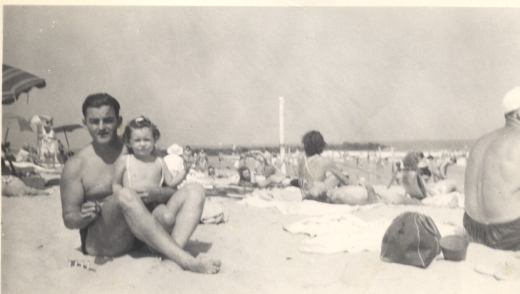
Dunlap and her father at the beach, probably Coney Island. ”“My happiest vacations were at the beach,” says Dunlap, “here, at the Jersey shore, at Jones Beach, and two glorious winter weeks in Florida.”
Susan Dunlap (b. 1943) is the author of more than twenty mystery novels and a founding member of Sisters in Crime, an organization that promotes women in the field of crime writing.
Born in New York City, Dunlap entered Bucknell University as a math major, but quickly switched to English. After earning a master’s degree in education from the University of North Carolina, she taught junior high before becoming a social worker. Her jobs took her all over the country, from Baltimore to New York and finally to Northern California, where many of her novels take place.
One night, while reading an Agatha Christie novel, Dunlap told her husband that she thought she could write mysteries. When he asked her to prove it, she accepted the challenge. Dunlap wrote in her spare time, completing six manuscripts before selling her first book, Karma (1981), which began a ten-book series about brash Berkeley cop Jill Smith.
After selling her second novel, Dunlap quit her job to write fulltime. While penning the Jill Smith mysteries, she also wrote three novels about utility-meter-reading amateur sleuth Vejay Haskell. In 1989, she published Pious Deception, the first in a series starring former medical examiner Kiernan O’Shaughnessy. To research the O’Shaughnessy and Smith series, Dunlap rode along with police officers, attended autopsies, and spent ten weeks studying the daily operations of the Berkeley Police Department.
Dunlap concluded the Smith series with Cop Out (1997). In 2006 she published A Single Eye, her first mystery featuring Darcy Lott, a Zen Buddhist stuntwoman. Her most recent novel is No Footprints (2012), the fifth in the Darcy Lott series.
In addition to writing, Dunlap has taught yoga and worked for a private investigator on death penalty defense cases and as a paralegal. In 1986, she helped found Sisters in Crime, an organization that supports women in the field of mystery writing. She lives and writes near San Francisco.

Dunlap and her father at the beach, probably Coney Island. ”“My happiest vacations were at the beach,” says Dunlap, “here, at the Jersey shore, at Jones Beach, and two glorious winter weeks in Florida.”
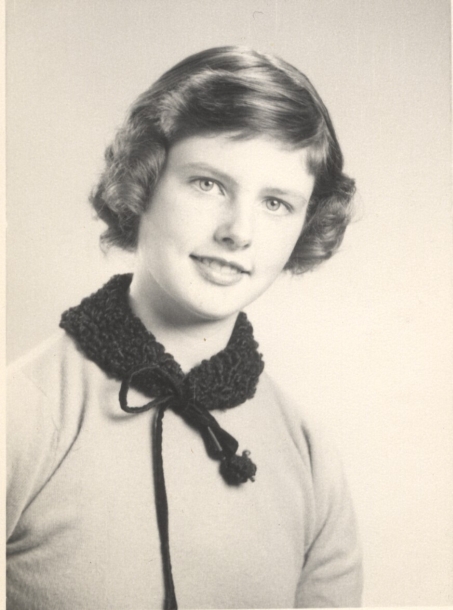
Dunlap’s grammar school graduation from Stewart School on Long Island, New York.
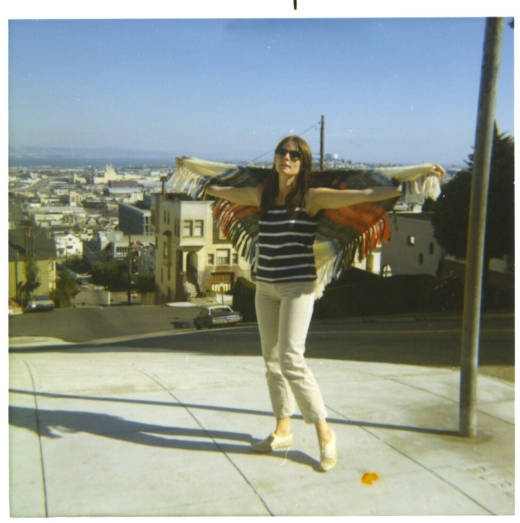
In 1968, Dunlap arrived in San Francisco; this photo was taken by her husband-to-be atop one of the city’s many hills. Dunlap recalls, “It’s winter; I’m wearing a T-shirt; I’m ecstatic!”
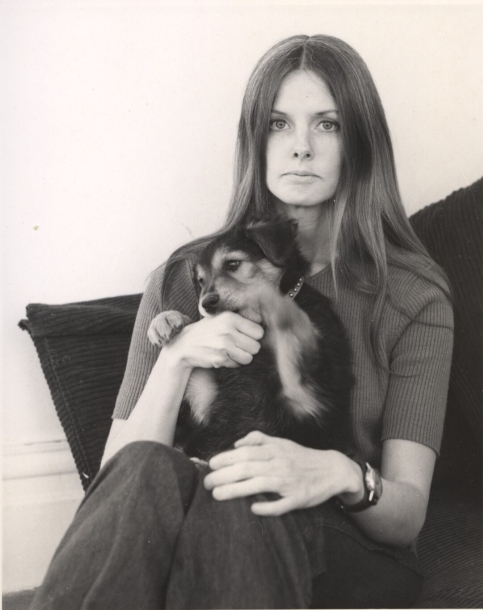
Dunlap’s dog Seumas at eight weeks old. “We’d had him two weeks and he was already in charge, happily biting my hand (see my grimace),” she says. “He lived for sixteen good, well-tended years.”
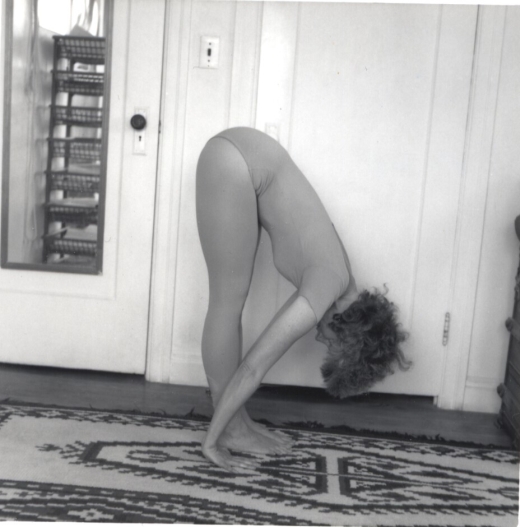
Dunlap started practicing yoga in 1969 and received her instructor certification in 1981, after a three-week intensive course in India with B. K. S. Iyengar. Here she demonstrates the uttanasa pose (the basic standing forward bend) for her students.
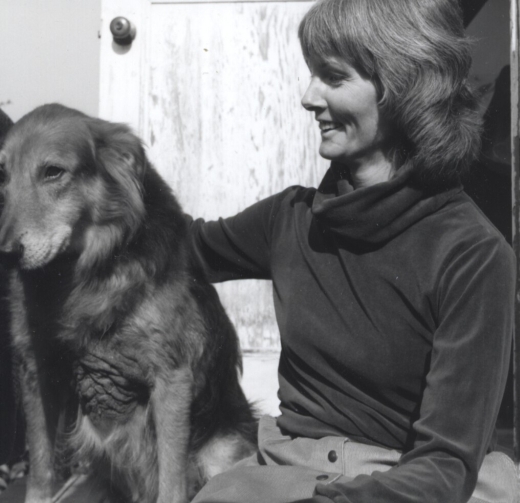
Seumas and Dunlap in 1988: “He was an old guy by this time, who had better things to do than be a photo prop. I think his expression says it all.”
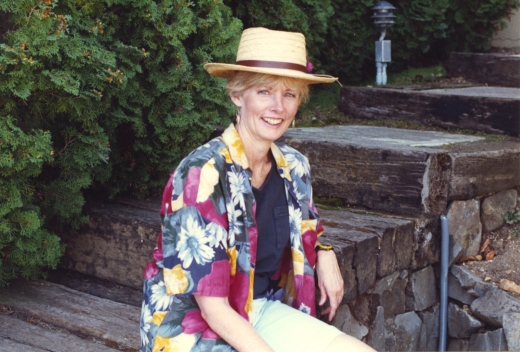
Dunlap relished West Coast life. “This is what someone who grew up in the snow of the East Coast dreams of . . . the California life!”
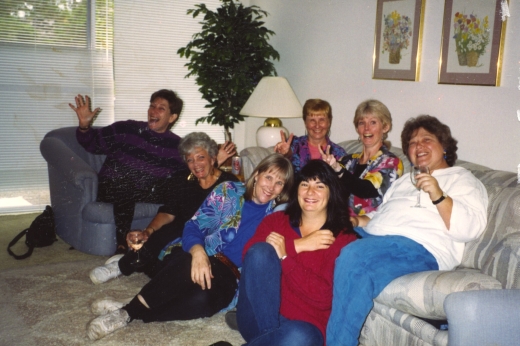
For her fiftieth birthday, Dunlap and a group of close writer friends went to Santa Cruz for the weekend. Seated above from left to right: Marilyn Wallace, Marcia Muller, Dunlap, and Shelley Singer. Seated on the floor: Judith Gruber (pen name Gillian Roberts), Linda Grant, and Lia Matera.
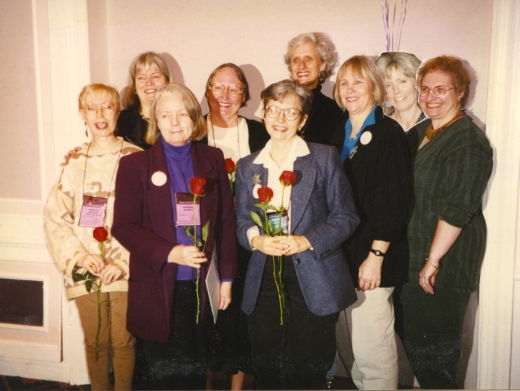
The Sisters-in-Crime presidents and former presidents—known as the Goddesses—always gather for a picture at conventions. One year, Dunlap had to miss the gathering. Her friends, knowing how much she wanted to be there, photoshopped her into the image.
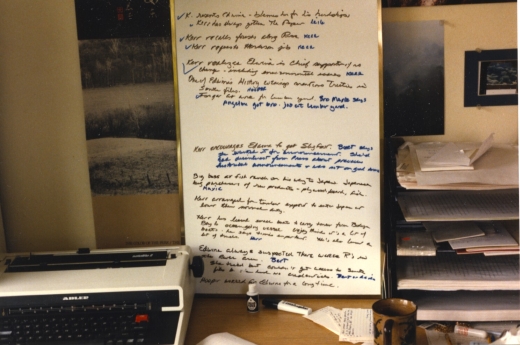
Dunlap’s last typewriter, before she happily switched to writing on a computer. “Plotting is one of the aspects of writing I really like—everything’s new, all gates open, all roads wide,” she says. “But it involves a great deal of data with connections that are not always linear. On paper or white board or with notes taped on corkboard—I tried them all—it was cumbersome. Using the computer was magic.”